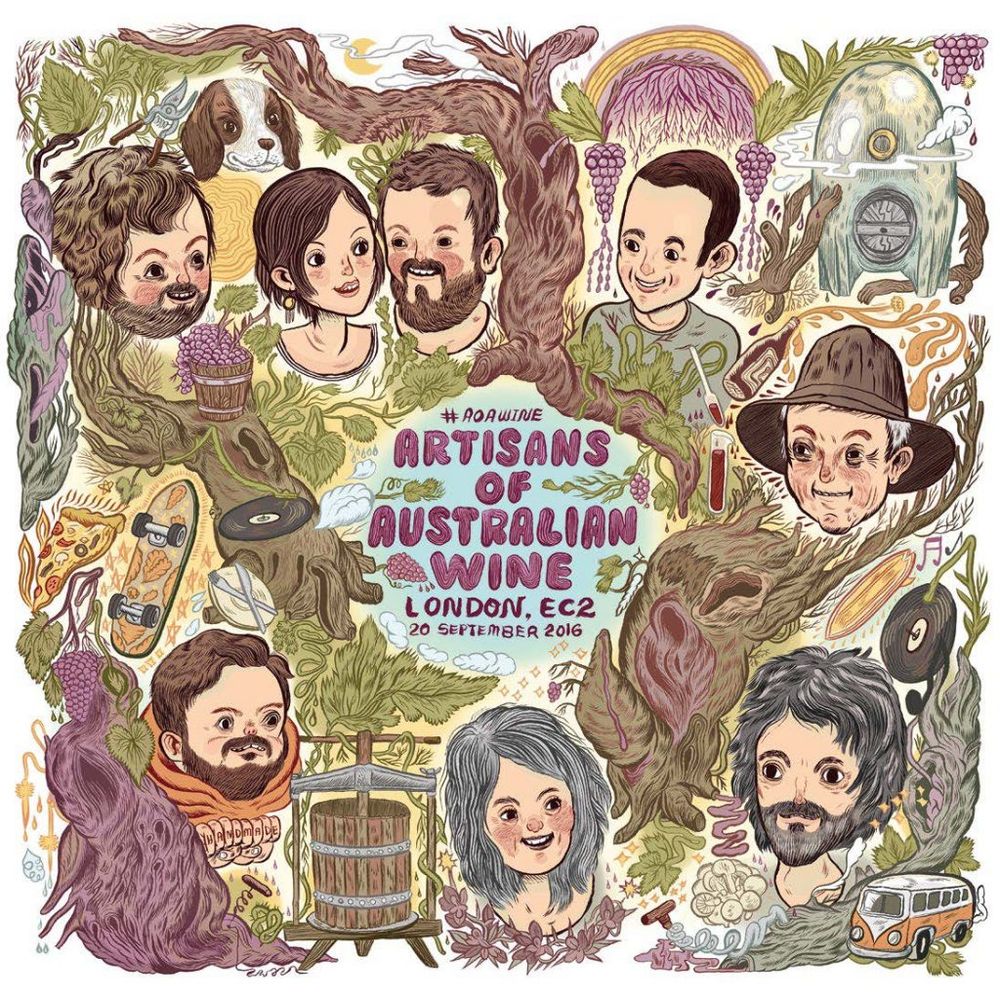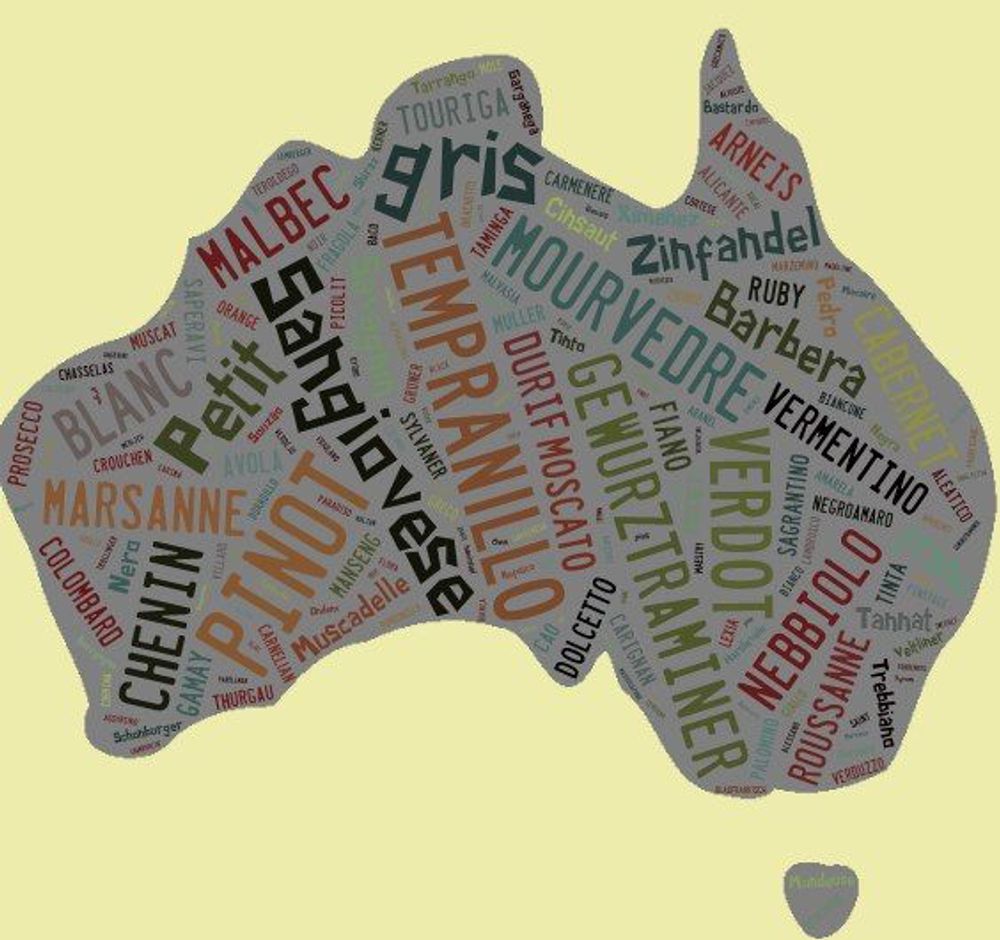From Fiano to Dolcetto via Friulano and Montepulciano Australia is shaking up its own wine scene with its alternative varieties and now hopes to do the same in the UK with Wine Australia’s second Alternative Varieties Tasting.
It might just be me, but whenever I hear the term “alternative” I immediately start thinking of all the great so called alternative bands there have been over the years.
You know the ones, all jingly, jangly guitars, lots of hair gel, a wardrobe that starts at black, ends in grey, are massive for two years and then end up playing to the same crowd for the rest of their lives.
If you’re CD collection has the likes of Half Man Half Biscuit, The Cure, The Smiths, Radiohead, Arcade Fire, The Kooks and The Black Keys then you can safely put yourself in the “alternative” camp.

The Smiths: still the kings of the alternative music scene
Even if you aren’t in to that stuff it’s always a good safe bet when in new company to go for “alternative” when you are asked what kind of music you like. Even if you are secretly listening to Coldplay and have actually downloaded the new Elton John album (I haven’t by the way).
It works just the same when it comes to reciting films that have had the biggest impact on you. Your personal DVD collection might be full of Top Gun, Love Actually and the Bourne collection, but mentioning the fact you just love the films of Pedro Almodóvar and David Lynch is alway going to play better in polite company than admitting you have already reserved seats for when the new Star Wars film is released.
Wine’s bread and butter
It is also, of course, the bread and butter of the wine trade to claim an undying love for an alternative grape variety that you’ve just discovered on the slopes of Moldova, when actually your fridge is full of Chardonnay.
But just as all those great alternative bands and films have built up huge, loyal fan bases over the years it is very much the same when it comes to choosing the wine to drink when listening or watching them.

Australia’s New Order of wines is very different to what it was promoting 20 years ago
Your Nero D’Avolos, Albarinos and Gruner Vetliners may not be on the Pyramid Stage at Glastonbury, but they will be sell outs on the aptly named ‘Other Stage’.
In fact there are now so many grape varieties all vying for a place in the alternative charts that they have created their own separate wine trade and consumer base.
At one end of this new ‘alternative’ market are the all the specialist independent wine merchants that have emerged over the last five years. All promising to bring the ‘off beat’, the ‘interesting’, the ‘dynamic’, and ‘exciting’ grape varieties to a new generation of wine bars, restaurants and independent wine merchants whose lists and shelves are full of the weird and wonderful.
In fact the only way that the big classic varieties such as Pinot Noir, Cabernet Sauvignon, or Shiraz can get a look in these days is to re-invent themselves with increasingly specific, terroir-driven, cool climate focused versions based on new clones, grafting techniques or any other way to make them feel like an ‘alternative’ grape variety. Even though they belong to the same family that can pack out Wembley Stadium any day of the week.
Celebrating variety

Wine Australia has a strong track record in hosting tastings that celebrate the alternative and artisan winemaking in Australia
Which brings us neatly (ish) to next week’s Wine Australia’s Alternative VarietiesTasting in London, on June 28. An event dedicated to celebrating alternative varieties “that are not mainstream and not extensively planted”.
Anyone who went to Wine Australia’s main generic tasting in January won’t be surprised it is now running a separate, dedicated show just to throw the spotlight on Australia’s (long standing) love affair with grape varieties that don’t have a crew to drive them to the next gig.
Australian grown Italian varieties were very much the star of the show in January with a growing number of importers looking to include them as part of their ranges.
As The Buyer reported at the time Italian varieties are not just being grown for their novelty factor, but because they really working in the soils and drier growing conditions of certain parts of Australia.
Laura Jewell MW, head of Wine Australia in the UK believes the new wave of Australian wines based around Italian and Mediterranean varieties are far from being just a fad. They are developing in to a serious category in their own right and giving winemakers the opportunity to use different grapes styles that could be better suited to their soils and conditions than more traditional varieties.
All of which offers sommeliers and UK buyers good value, food friendly, fruit driven wines in return.
Here are some figures to back Jewell up:
- Fiano is up 273% to A$162,000 worth of UK exports.
- Vermentiono is up 185% to A$227,000
- Sangiovese is up a further 83% to A$396,000
- It’s not just Italy either with Touriga Nacional up 575% to A$43,000.
- Australian Tempranillo is also doing well around the world with a 28% increase in exports in the year to March 2017 with a 33% jump in Tempranillo coming to the UK.
Ideal for independents
Nik Darlington of Red Squirrel Wine is one of the newcomers to the UK independent scene with a business dedicating to “squirrelling” out different varieties from around the world. It even calls itself “Britain’s alternative wine merchant”.

Nik Darlington and Charles Zotto at Wine Australia’s tasting in January
It has, for example, Dal Zotto Wines, Christian Dal Zotto, marketing manager of the family businesses stresses this is far from being a gimmick. Instead it is about making the right wine for your area, he stresses. “It is about paying attention to the terroir and not just looking to do another Shiraz.”
He told The Buyer in January that Italian varieties are ideal in that they can cope with what are the huge differences in temperature between day and night in the King Valley which can go from 37 to 40 degrees celsius down to below zero. “This is an opportunity to really develop Italian varieties like they have not been before. Where there can be so much more intensity in the fruit, but still maintain the freshness. We can make our mark with these wines.”
That said it is important not to overstate the size of some of these alternative varieties in Australia. They might be winning many plaudits but many are very small in terms of plantings. Nero d’Avola, for example nearly tripled in size of plantings from 2012 to 2015, but still only amounts to less than 100 ha (ABS 2015), and exports, while growing, were valued at less than $80,000 in the past 12 months.
Been there, done that

Celebrating alternative varieties is nothing new in Australia. In fact it has had its own Australian Alternative Varieties Wine Show (AAVWS) since 2001. How alternative is that. Long before there was even such a thing as a wine blogger in search of the “unknown”.
That said what we refer to as alternative can quickly become an mainstream act very quickly. For example, the biggest ‘alternative’ variety to be entered in the AAVWS (which is completely separate from Wine Australia) as recently as 2009 was Pinot Gris and Pinot Grigio. But it was on the ‘exclusions’ list the following year.
What the AAVWS refers to as ‘alternative’ could keep a wine conversation going for hours. Also currently on the AAVWS’s exclusion list are wines, or blends, made from the following: Muscat Gordo, Pinot Gris/Grigio, Chardonnay, Semillon, Sauvignon Blanc, Cabernet Sauvignon, Pinot Noir, Merlot, Shiraz, Chenin Blanc, Riesling, Colombard, Grenache and Verdelho.
But that still leaves more than 100 varieties that are grown in Australia as eligible.
Many of which will be at what is Wine Australia’s second tasting dedicated to alternative varieties next week.
The free pour tasting will include 120 wines from over 25 regionsand cover varieties such as Assyrtiko, Saperavi, Teroldego, Aglianico, Trincadeira Brachetto, Barbera, Dolcetto, Friulano, Gruner Veltliner, Lagrein, Montepulciano, Nero d’Avola, Roussanne and Sangiovese.
It will also include a number of wines looking for distribution in the UK like a couple of Saperavis that were highlights of the Cool Climate High Altitude seminar that Wine Australia held last month.
So if you are in to your alternative scene then trim your goatee, download some early INXS and get yourself along to Australia House on June 28.































